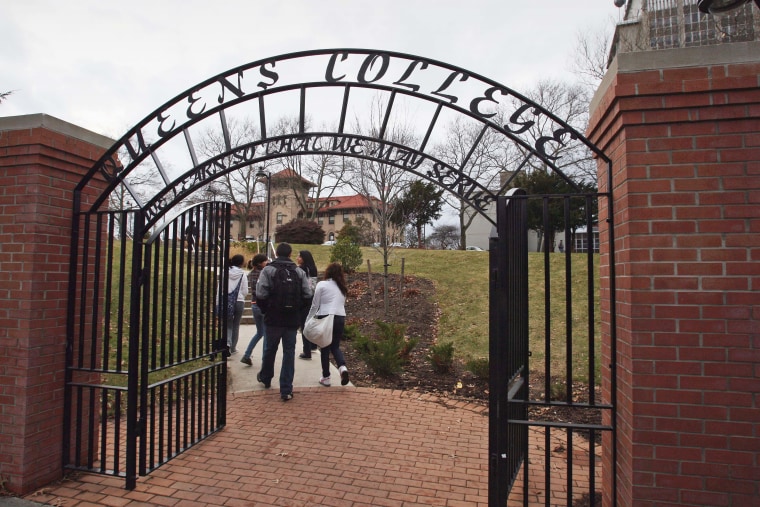For the first time in history, President Joe Biden has formally designated a week to honor educational institutions that serve Asian American, Native Hawaiian and Pacific Islander students — particularly those from low-income, first-generation and underrepresented backgrounds.
Biden issued a proclamation making Sept. 25 through Oct. 1 Asian American and Native American Pacific Islander-Serving Institutions Week, with members of his administration visiting one of the institutions, Queens College, City University of New York, on Tuesday to kick off the celebratory week.
These colleges and universities make up almost half of Asian American, Native Hawaiian and Pacific Islander undergraduate enrollment, the proclamation noted. Some of the schools include the University of California, Irvine; the University of San Francisco; and the University of Massachusetts Boston.
“For so many, higher education is a ticket to a better life,” Biden wrote in the proclamation. “But while talent, creativity, and determination are found in people all across this country, not everyone has an equal shot at higher education.”
For more from NBC Asian America, sign up for our weekly newsletter.
Schools that are granted the classification receive federal funding. And so far, more than five dozen institutions have received funds as a result, according to New York University’s MSI Data Project. Though they make up just over 5% of all colleges and universities, they award 40% of the bachelor’s degrees and half of the associate degrees attained by all Asian American, Native Hawaiian and Pacific Islander college students.
Mike Hoa Nguyen, assistant professor of education at New York University’s Steinhardt School of Culture, Education, and Human Development, explained that the funds are generally used to increase enrollment; expand Asian American studies, research and other academic programs; and further diversity, equity and inclusion initiatives.
Schools can qualify to be part of the Asian American and Native American Pacific Islander-Serving Institutions Program if they have an enrollment that is at least 10% Asian American, Native Hawaiian and Pacific Islander. In addition, at least half of their students must receive need-based assistance or have significant numbers of students who receive federal Pell Grants, typically given to undergraduates who display “exceptional” financial need, among other requirements.
In contrast to historically Black colleges and universities, institutions that fall under this designation were not initially created with the purpose of targeting communities of color; rather, they were founded as predominantly white institutions. But shifting demographics and an uptick in Asian American enrollment led many schools to qualify and seek out the program, and they now serve an increasingly diverse population.
Legislators, including members of the Congressional Asian Pacific American Caucus, also spoke out in support of the institutions to commemorate the week. Rep. Judy Chu, chair of CAPAC, called the colleges and universities “critical” in increasing access to higher education for underrepresented Asian American communities.
“I know firsthand as a former community college educator how a quality secondary education can unlock the full potential of students,” Chu, D-Calif., said. “At the same time, however, I also recognize that so many students of color and lower-income students face enormous educational barriers to pursuing their dreams.”
Nguyen explained that the creation of the school designation in 2007 was the result of work from activists and scholars, who sought to address the fallacy of the model minority myth.
Nguyen said that groups, including the nonprofit Southeast Asia Resource Action Center, or SEARAC, helped raise awareness around the reality of the large educational disparities among Asian Americans. Southeast Asian groups, for example, have lower levels of educational attainment, with American Community Survey data from 2006-2008 — around when the designation was implemented — showing that roughly two-thirds of Cambodian, Laotian and Hmong Americans had not attended college, SEARAC has noted.
“It is a way for schools to access funds in order to increase college student access. And then once the students are enrolled in those schools, to ensure that they’re successful — that means that they graduate from college,” Nguyen said. “It also means that they have a sense of belonging on campus, they feel that their identities are visible on those college campuses.”
Since the program has been implemented, Nguyen said that the community has seen tangible improvements in educational attainment and school experiences. And research shows that the program has been associated with a host of other social benefits.
“We see students have a greater sense of belonging and they feel like they see themselves on campus and in the curriculum because of these grants,” Nguyen said. “All sorts of measures, quantitative and qualitative, show … the benefits are pretty widespread.”
